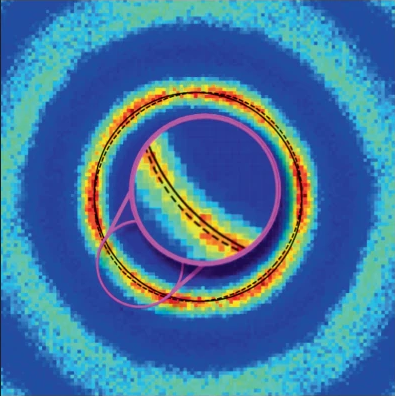 posted: 03/18/2022
posted: 03/18/2022
If you squeeze very gently, no toothpaste comes out of the tube. Increase the force a bit and the toothpaste suddenly begins to flow. This transition from “no-flow” to “flow” is called yielding, and it is a ubiquitous feature of disordered materials (e.g., dense particle suspensions, foams & emulsions, and metallic glasses). A study led by Larry Galloway, a graduate student in Paulo Arratia’s lab, and Max (X.) Ma, a MRSEC alum from Arjun Yodh’s lab, provides new insights on how the evolution of the material micro-structure, quantified using the concept of excess entropy, can be used to predict this yielding transition in disordered materials. To do so, the team employed novel experimental methods (Galloway, Keim, Ma, Arratia, Jerolmack, and Yodh), numerical simulations (Teich, Graham, Kammer, Arratia, Jerolmack), and theory (Galloway, Celia Reina). The team found that the quantity excess entropy can be used to characterize the sample microstructure, as well as to develop a phenomenological model that captures flow quite well in both experiments and simulations in cyclically sheared dense colloidal systems. In particular, the team finds that the inception of flow (i.e., yielding) is marked by the material loss of memory.
news release